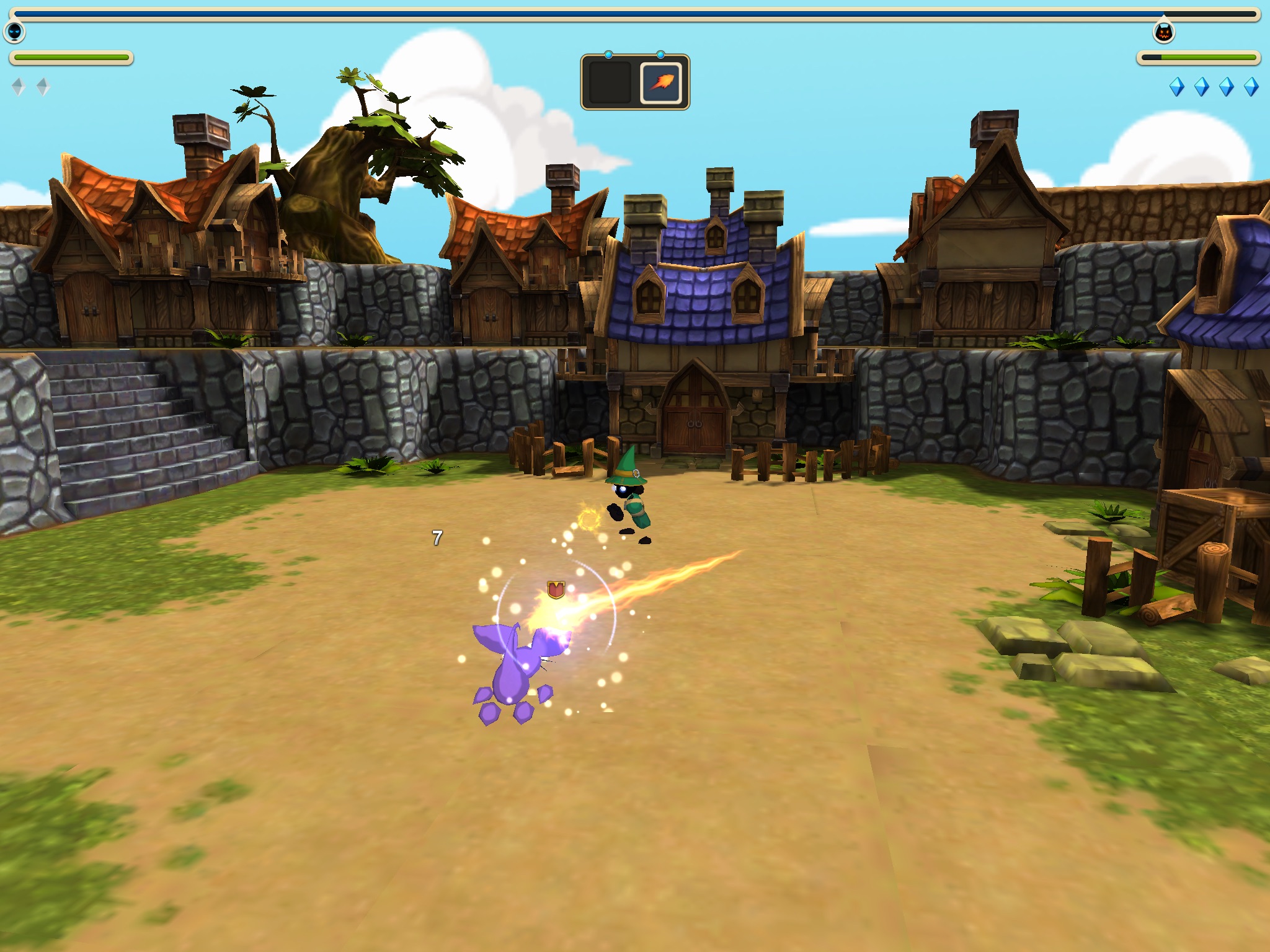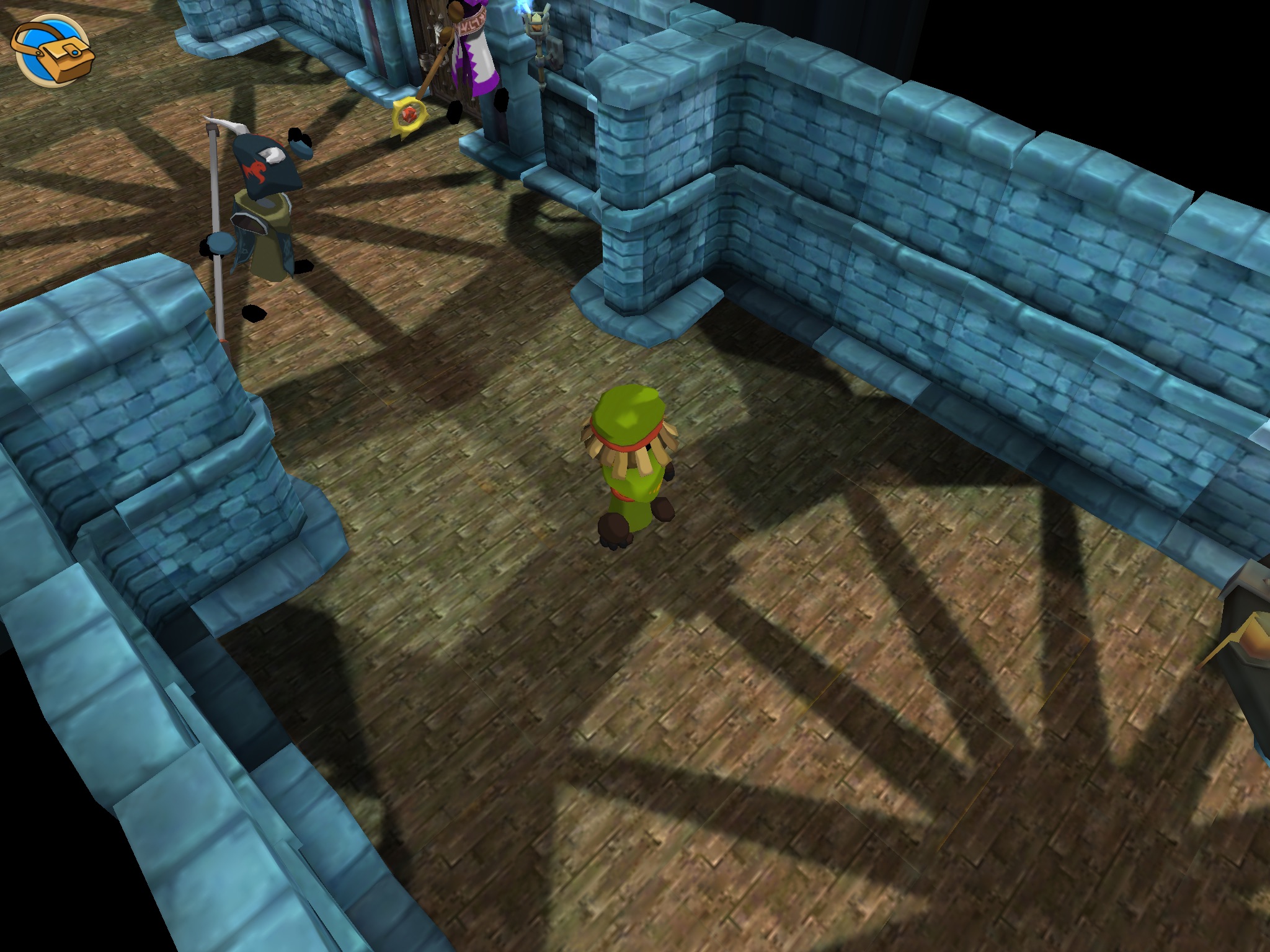 Looking past Mobius Of Magic (Free) ‘s lifting of Final Fantasy‘s mage designs, there’s a somewhat creative idea at its core. Battles play out as duels between magic users, and in this game the best offense is a good defense. You can block most incoming attacks by swiping in the direction it’s coming from, and in doing so, not only does it nullify most of the damage, but it also charges up your mana so that you can deliver stronger counter-attacks. Thus, battles are enjoyably fast-paced affairs where you need to pay careful attention to your foe and react quickly and precisely. It makes a valiant go of building a game around that interesting mechanic, but it ultimately doesn’t quite manage to take things much farther than what you’ll see in the earliest combats.
Looking past Mobius Of Magic (Free) ‘s lifting of Final Fantasy‘s mage designs, there’s a somewhat creative idea at its core. Battles play out as duels between magic users, and in this game the best offense is a good defense. You can block most incoming attacks by swiping in the direction it’s coming from, and in doing so, not only does it nullify most of the damage, but it also charges up your mana so that you can deliver stronger counter-attacks. Thus, battles are enjoyably fast-paced affairs where you need to pay careful attention to your foe and react quickly and precisely. It makes a valiant go of building a game around that interesting mechanic, but it ultimately doesn’t quite manage to take things much farther than what you’ll see in the earliest combats.
You play as an aspiring young mage who is just about to become an apprentice of the local sorcerer. After passing his tests, he tasks you with delivering an item to a white mage friend of his in the next town. When you walk in the door of the temple, a mysterious armored warrior beats you and absconds with the item, forcing all of the guilds to come together to try and figure out exactly what the warrior’s true motives and ambitions are. In principle, this means running back and forth between a few different locations, delivering items and fighting pre-set battles against a variety of enemies. Generally speaking, you’ll need to be of an appropriate level to have a chance of winning each fight, and since there are no random battles, the only way you’ll be at the right level for each combat is to follow the exact line the game lays out.

There are several schools of magic, and you’ll join almost all of them very quickly. Although their basic attacks are essentially the same, each school has a set of unique advanced spells that you’ll learn as you climb through the ranks. You’ll also get some new duds that you’ll need to equip to make use of those spells. There are a few other equipment pieces you’ll come across that modify your stats or move the plot forward. Some of them are bought, but most are found or given as a reward for finishing a quest. After a while, you’ll even get some familiars that will stand beside you in battle, supporting you in various ways. New stuff comes at a nearly breakneck pace, and I get a very strong impression that the existing game was cut down from something that was far more ambitious at one point. You’ll only get one or two fights with your latest rewards before the game makes you switch over to something else. The game is nearly finished by the time you finally do have the freedom to use whatever you want.
It’s not a very long game at all, running only a few hours at most, and it’s very linear due to the scarcity of battles and the relative importance of your experience level. What’s here is fairly impressive, however. The game is rendered fully in polygons, and the details of houses, caves, and other structures are pretty good. I appreciate the variety among the locations featured in the game, as well. The seams between squares on the ground are generally visible and I’m not sure they’re meant to be, but otherwise, it’s a nice-looking game. Characters all look like Square Enix’s Black Mage (aka He-Man‘s Orko?) wearing various costumes, and they’re all limbless like Rayman. They animate reasonably well, at least, and they certainly have personality. There isn’t a lot of music, but what’s here is well done. The UI could use some work, as NPC text is positively tiny, making it uncomfortable to read. Hotspots also require you to tap a pretty small circle to interact with them.

In battles, you and your enemy face off, with the fastest character taking their turn sooner and more often. When your turn comes up, you can swipe left, right, or forward to fire a regular attack in that direction, or you can perform one of a few other gestures to use an advanced spell. Regular attacks require just a single crystal of mana, while other spells can use up to five. At the start of your turn, a single crystal is restored, but you can also restore crystals by blocking the enemy’s attacks. When they fire out regular attacks, simply swipe in the same direction to block them. If they don’t use a regular attack, well, enjoy the smack to the face and hope you’re strong enough to survive. Whoever’s HP is reduced to zero first, loses.
It keeps your fingers busy and forces you to pay attention to the battles. Mercifully, most fights wrap up quickly, which is a good thing because the pressure to not make a mistake can be very big as you work through the ranks. The thing that bothers me about the battles is that you can only defend against regular attacks. The enemies can use most of the same attacks you can, and many of those attacks can essentially end the battle in one fell swoop. If you’re up against a speedy foe who will get the first turn every time, you have to hope that it won’t stun or blind you before you can get a move in yourself. It’s pretty frustrating when this happens, but the RNG will eventually relent and give you the opening you need.

A bigger problem is that this is really all the game has to offer. Enemies get a bit faster as you go on, making their attacks harder to block, and those nasty status effects get more common, but there’s no viable strategy to counteract either, so you end up just doing the same old thing for most of the game. Outside of the battles, you’re not doing much more than running back and forth through small areas, talking to people in order to get to the next fight. Mobius Of Magic makes a great first impression with its attractive visuals and exciting combat, but beyond that charming introduction, there isn’t much else to chew on.